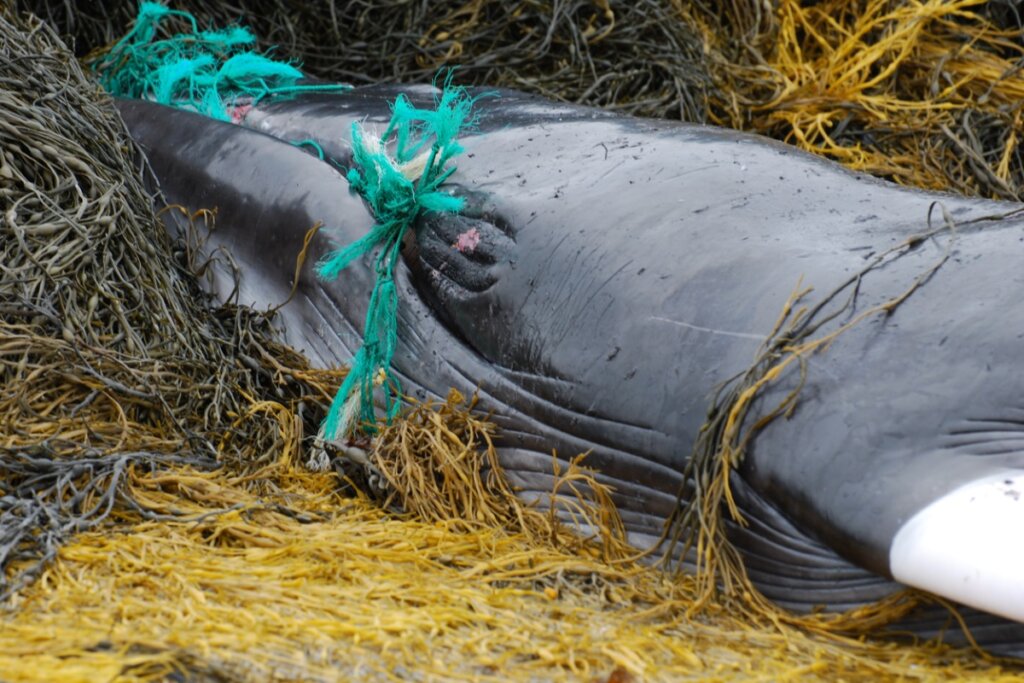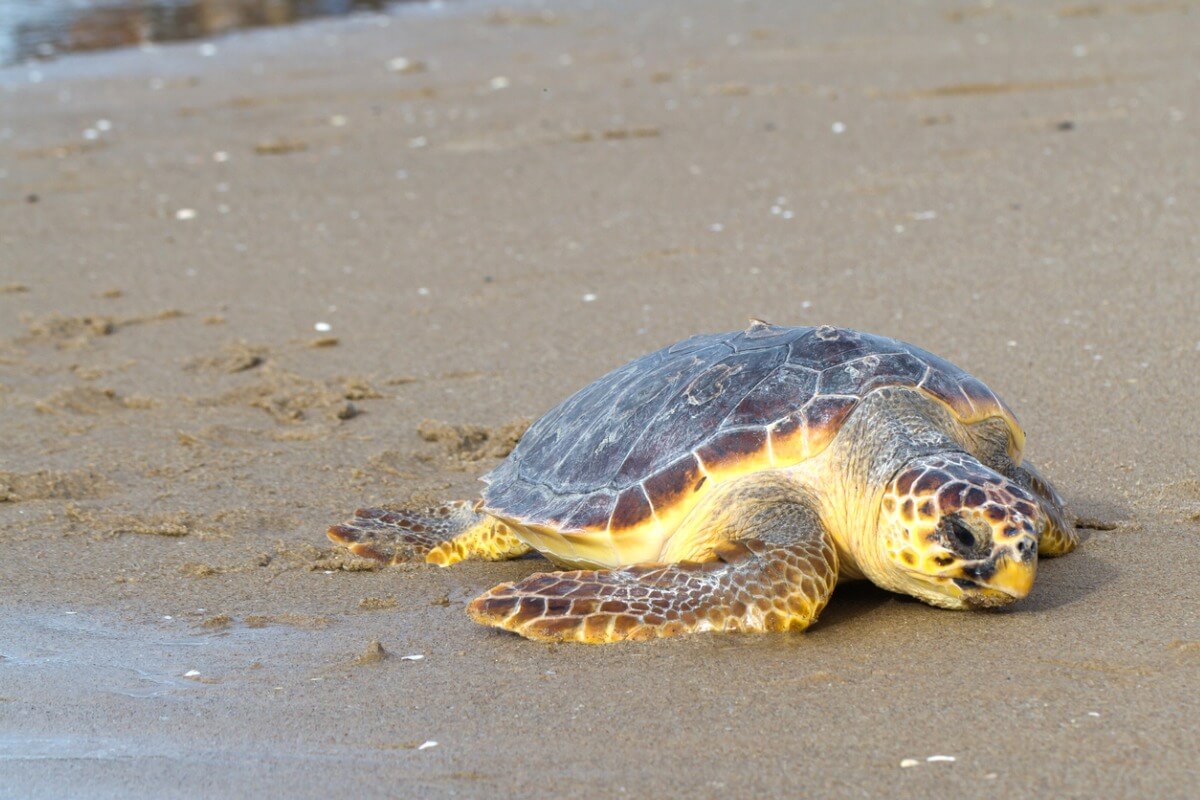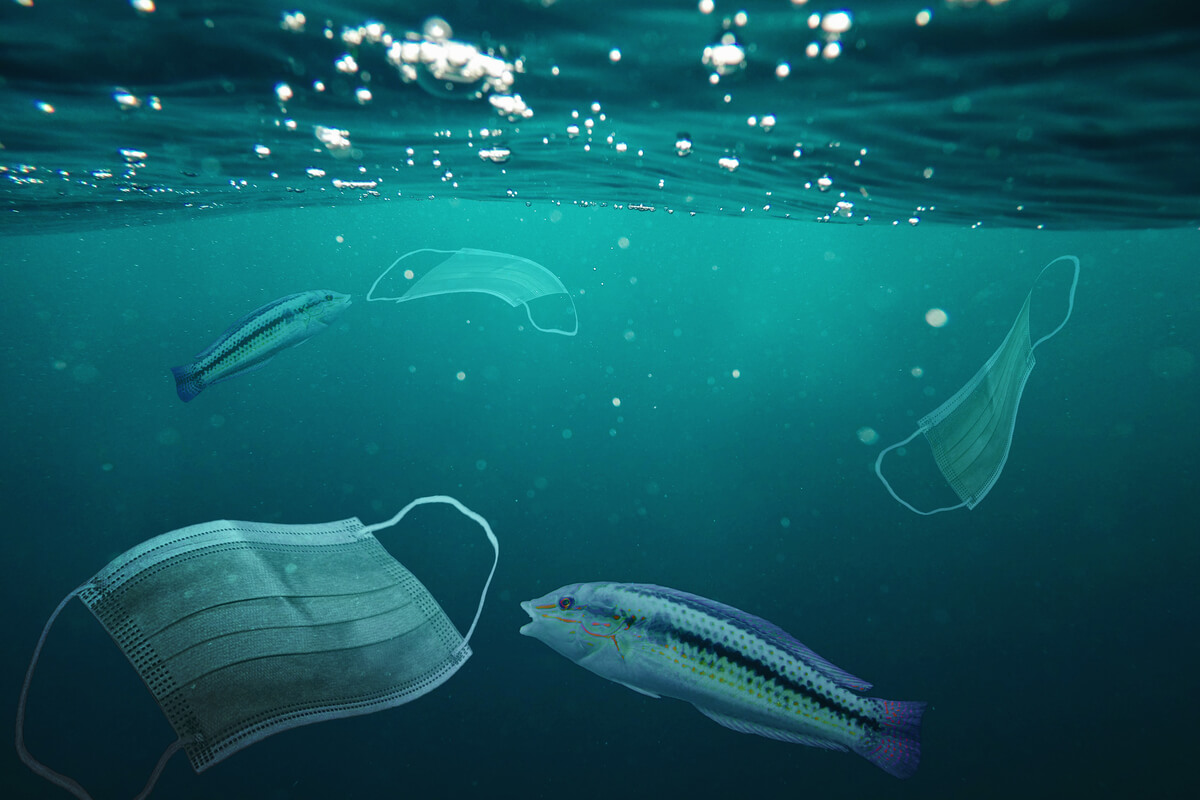Dolphins, Whales and Turtles: Victims of Pollution in Sri Lanka

After the fire on the X-Press Pearl container ship, the victims of pollution on the beaches of Sri Lanka continue to multiply. Among all the victims, dolphins, whales, fish and sea turtles have ended up ashore after being poisoned.
The damage from the fire itself was compounded by the release of several highly toxic substances, causing an ecological disaster that still affects the entire area today. Learn about the details of this tragedy for the ecosystem here.
The sinking of the X-Press Pearl
On May 20, 2021, the container ship X-Press Pearl caught fire. This fire gradually consumed the ship for 13 days, gradually sinking it with all the fuels and chemicals it was carrying.
This happened off the coast of Colombo, the capital of Sri Lanka. Faced with the impossibility of putting out the fire immediately, the government of the country decided to tow the ship as far as possible from the coast to try to prevent damage to the human population. This attempt was rendered impossible after several hours.
The disaster that occurred is unprecedented in the history of the country. In the next section, we’ll bring you the exact data on the victims of pollution on the beaches of Sri Lanka. It’s sure to touch your heart.
The fire featured in this news wasn’t extinguished for 2 weeks.

Dolphins, whales, and turtles: victims of pollution on the beaches of Sri Lanka
The total extent of the coastal damage from the sinking of the X-Press Pearl covers 80 kilometers of coastline. Although the fire was put out, the spillage of the chemicals that the ship was carrying couldn’t be prevented. Some of those substances are these:
- Caustic soda, a corrosive substance that can cause blindness when in contact with the eyes.
- Thousands of liters of highly corrosive nitric acid.
- Lead, copper, and lithium batteries.
- Methanol, an irritant substance that also affects the nervous system.
- Around 350 tons of oil.
- 9800 tons of epoxy resin.
Apart from all this, at least 28 containers containing plastics from the packaging industry fell into the sea. After a while, the animals affected by the fire and the subsequent spill began to arrive dead ashore.
Victims of the spill
On the southern and southeastern beaches of Sri Lanka, 5 of the 8 species of sea turtles that exist in the world make their nests. The peak spawning season occurs between April and May, so the ecological disaster has been especially destructive to these marine reptiles, and has occurred at the worst possible time.
A container surfaced more than 100 kilometers south of the wreck site and covered the main tourist beaches near the southwestern city of Galle with microplastics.
Whether it’s from the heat of the flames or the chemicals, the wildlife of Colombo’s seas has been hit hard. Although the figures aren’t yet final, this is the approximate count of victims:
- 4 whales
- 20 dolphins
- More than 170 sea turtles
- Countless fish, crustaceans, and other marine species
Just 2 months after the disaster, photographs of animals that had died from ingesting the microplastics that fell into the sea were published. These small pieces of plastic, in addition to clogging an animal’s digestive tract, can cause cell damage from oxidative stress and immune responses.
The ship contained between 70 and 75 billion individual plastic pellets.
This disaster isn’t the first
Spills of oil and other toxic substances into the sea are not something recent. Many ships have been wrecked carrying materials and fuels, leaving a trail of death that extends across the sea, but also over time.
The largest oil spill in history occurred on June 3, 1979, about 80 kilometers from the Mexican state of Campeche. It took 9 months to stop the oil spill, but, by then, 461,000 tons of oil had contaminated the sea water.
Another more recent case is that of the Prestige, an oil tanker that sank off the coast of Galicia, in Spain, on November 13, 2002. 77,000 tons of crude oil stained the Spanish beaches and years later the effects of the disaster are still being felt.
Almost every animal that came into contact with the Prestige spill is known to have died, but the effects on humans have not been studied.

Conclusions: our responsibility
In general, all these catastrophic events are followed by a series of demands by organizations and citizens who ask for compensation and solutions from responsible companies. A series of accusing fingers point at each other as volunteers and local governments clean up the mess – literally.
“How can we prevent these incidents?” is the usual question. There’s no simple answer: each person has the power to help in some way in solving the world’s problems, but only by working together can real results be achieved.
All cited sources were thoroughly reviewed by our team to ensure their quality, reliability, currency, and validity. The bibliography of this article was considered reliable and of academic or scientific accuracy.
- Petróleo, ácido y plástico en las costas de Sri Lanka: una mirada al desastre marítimo que golpea al país. (2021, 22 julio). ONU. https://www.unep.org/es/noticias-y-reportajes/reportajes/petroleo-acido-y-plastico-en-las-costas-de-sri-lanka-una-mirada-al
- Fernández, S., Bernabeu, A. M., & Rey, D. (2010). Persistencia del fuel enterrado en playas gallegas 7 años después del Prestige. Avances en Ciencias de la Tierra, 1, 63-80.